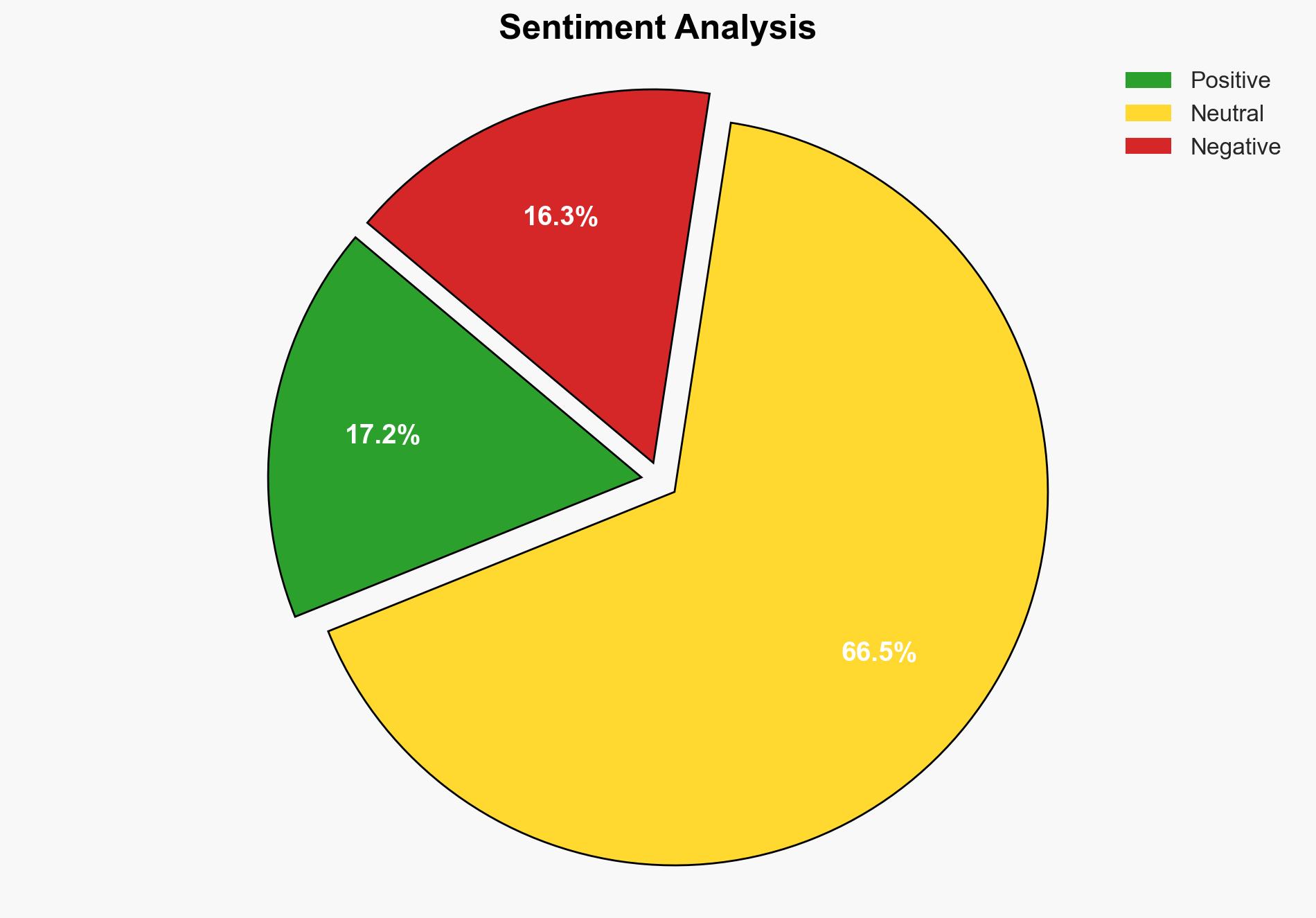Risk-Based Authentication The Future Of Secure Digital Access – Forbes
Published on: 2025-03-20
Intelligence Report: Risk-Based Authentication The Future Of Secure Digital Access – Forbes
1. BLUF (Bottom Line Up Front)
Risk-Based Authentication (RBA) is emerging as a critical tool in the fight against evolving cyber threats. Traditional security methods, such as passwords and two-factor authentication, are increasingly insufficient against sophisticated attackers. RBA offers a dynamic and intelligent approach by adapting security measures based on user behavior and risk levels in real-time. This method enhances security while maintaining a seamless user experience, reducing account takeover fraud and operational costs for businesses.
2. Detailed Analysis
The following structured analytic techniques have been applied for this analysis:
General Analysis
RBA assesses the risk level of login attempts and transactions using multiple contextual factors, such as user behavior, historical login patterns, device recognition, geolocation, and network attributes. By dynamically adjusting security measures based on perceived threat levels, RBA minimizes unnecessary disruptions for legitimate users while thwarting potential attackers. The system assigns a risk score to each authentication attempt, triggering additional security measures for high-risk scenarios.
3. Implications and Strategic Risks
The adoption of RBA has significant implications for various sectors, including financial institutions, e-commerce platforms, and enterprises. It enhances security without compromising user experience, which is crucial for customer retention and satisfaction. However, reliance on machine learning and artificial intelligence for risk assessment introduces potential vulnerabilities, such as algorithmic bias and data privacy concerns. Additionally, the evolving nature of cyber threats requires continuous updates to RBA systems to remain effective.
4. Recommendations and Outlook
Recommendations:
- Implement RBA systems across sectors to enhance security and user experience.
- Regularly update RBA algorithms to address emerging threats and minimize biases.
- Ensure compliance with data privacy regulations to protect user information.
Outlook:
In the best-case scenario, widespread adoption of RBA leads to a significant reduction in cybercrime and improved user trust. In the worst-case scenario, failure to address vulnerabilities in RBA systems results in increased data breaches and loss of consumer confidence. The most likely outcome is a gradual improvement in digital security as RBA systems evolve and adapt to new threats.
5. Key Individuals and Entities
The report does not mention specific individuals or organizations by name. However, it emphasizes the importance of financial institutions, e-commerce platforms, and enterprises in integrating RBA into their security frameworks.




